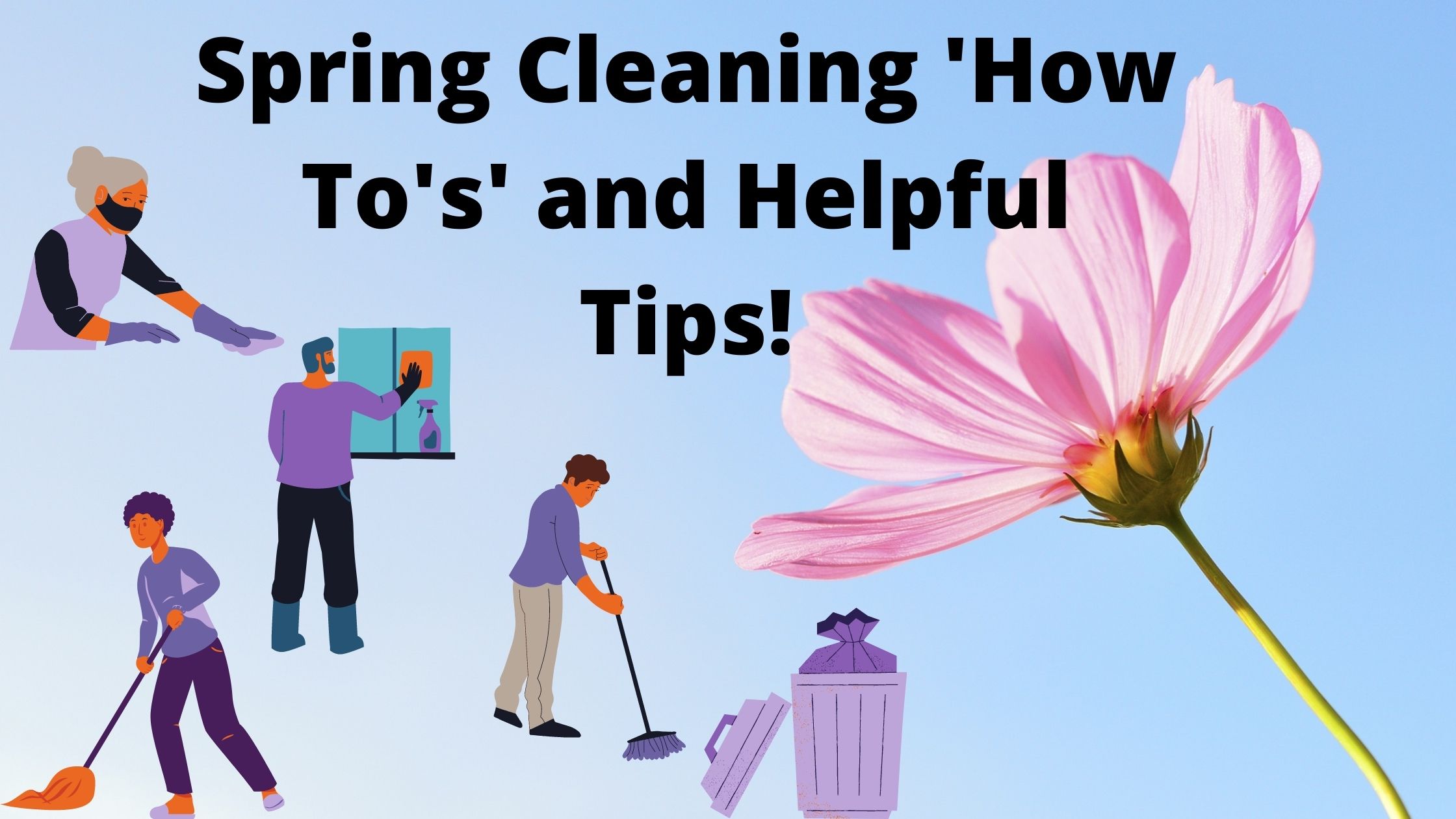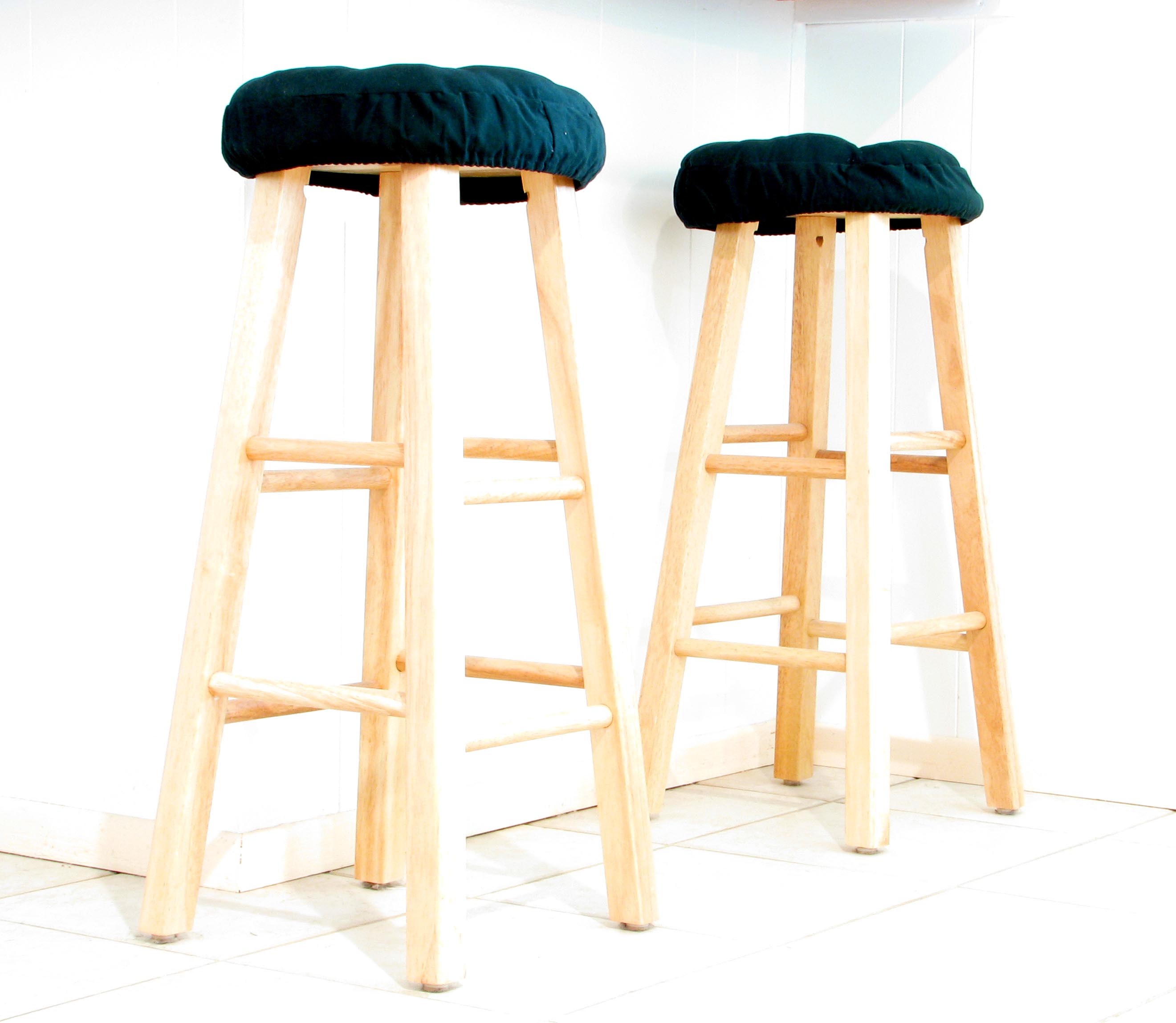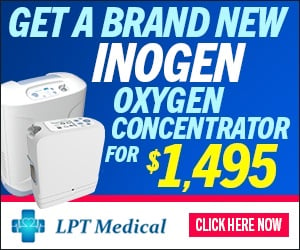
Spring is the season of new beginnings and fresh starts; it's the perfect time to get out your cleaning supplies and do some sprucing around the house. But spring cleaning isn't just a cliché, it makes sense to dedicate time once a year to catch up on chores and give some attention to neglected spaces in your home.
For people with COPD and other respiratory diseases, spring cleaning is an important opportunity to take care of lung irritants and hazards in the home. With spring allergens swelling and summer on the way, it's the perfect time to clear out clutter and make your home the cleanest, healthiest space it can be.
In this post, we're going to help you make the most out of spring cleaning by focusing on tasks that can help your COPD. We'll show you how to get rid of dust, mold, allergens, and how to improve your indoor air quality and ensure it continues to stay clean.
We'll give you tips for organizing your home to keep respiratory irritants at bay and ensuring outdoor allergens and pollutants don't build up in your home. We'll also show you how to protect your lungs from fumes, dust, and other particles while you clean, and how to make difficult cleaning projects easier to manage.
Keeping your home clean is not only good for a sound mind, but for healthy lungs as well. With the tips in this article, you can make sure you do spring cleaning right this year so you can enjoy the benefits of a healthy home the whole year round.
The Basics of Spring Cleaning
Regular cleaning year-round is important, but it's good idea to pause and pay attention to the details every so often. Even if you keep up with the necessities throughout the year, your house will inevitably collect hidden corners of dust and clutter and accumulate little maintenance and deep cleaning tasks that need attention.
If you let these things go for too long, they can become respiratory hazards and make your COPD symptoms worse. Dust, allergens, and toxic particles can sneakily build up in all sorts of places in your house, and spring cleaning is the perfect time to find and eradicate them all.

But before you get started, you should take some time to learn how to protect your lungs and go easy on your body while you clean. In the next sections, we'll discuss what kinds of supplies you'll need, what kinds of chemicals you should use, and how to protect your lungs from dust and fumes.
We'll also give you some general tips for cleaning as efficiently and effectively as possible, so you don't waste time and energy during your spring clean. COPD can make household tasks difficult, but planning ahead and learning new techniques can make cleaning easier and less tiring.
Protect Your Lungs When You Clean
The first thing you should consider is how you are going to protect your lungs from irritating particles and chemical fumes while you clean. After all, cleaning tends to kick up all sorts of respiratory irritants that can irritate your lungs and airways.
When you have COPD, cleaning without taking care to protect your lungs can do more harm than good, causing further lung damage and making your symptoms flare up. To clean safely, you need a two-pronged approach: using safe cleaning products and protecting your mouth and nose while you clean.
Avoiding Chemical Fumes

In general, you should avoid using commercial cleaning products, which are often made with harsh chemicals that can irritate your lungs airways. Instead, look for natural products made with mild ingredients or simply mix your own cleaning solutions at home.
Here are some chemicals that you should look out for and avoid using when you clean:
- Chlorine bleach
- Ammonia
- Detergents
- Aerosol sprays and fresheners
- Pesticides and fungicides
- Varnishes
- Floor wax and polish
- Oven cleaners
- Carpet cleaners
Commercial cleaning products aren't actually necessary for most cleaning tasks, and all you need is a few basic ingredients to make DIY cleaners for your home. Soap, vinegar, and baking soda are surprisingly effective for cleaning, and, when used in moderation, are much gentler on your lungs.
You should also stock some bleach and ammonia for more serious sanitizing, but be careful to never mix bleach and ammonia together. Be very careful to always examine the labels of any chemicals or cleaning products you have and only use them as directed.
Visit our previous post here for some recipes you can use to make your own safe cleaning solutions at home. You can also visit the EPA's website for “Safer Choice” products, which are specially labeled to indicate that they are safer for the environment and your health.
One of the most important things to remember is to never use chemicals in an enclosed space. At the very least, the fumes could irritate your eyes and airways, and at worst, they could even be deadly.
Any time you use a cleaning solution, think first about the space you will use them in and whether or not it needs extra ventilation to be safe. You may need to open some windows, turn on your bathroom vent, or set up a fan to increase air circulation in the room.
Particle Safety
Whenever you dust or do deep cleaning, you are likely to kick up all sorts of particles that have accumulated and laid dormant in dark corners. All of these particles, including dust, mold spores, pet dander, pollen, and smog and smoke particles, can inflame your lungs and cause your COPD symptoms to flare up if you're not careful.
That's why you need extra equipment to protect your mouth and nose from any particles or fumes you encounter when you clean. Even something as simple as covering your face with a scarf can keep you from breathing in large bits of dust, but you may need a special mask to protect your lungs from the smaller particles.

Particle respirators are much more effective than a basic surgical mask or face covering, and can screen out 95 percent of particles as tiny as 0.3 microns in width. This is the best choice if you suffer from allergies or are very sensitive to airborne particles.
To get a proper particle mask, look for an N95 respirator that is certified by the Food and Drug Administration (FDA) or the National Institute of Occupational Health and Safety (NIOSH). You can also see a list of official N95 mask manufacturers at the CDC's website here.
Some people have trouble breathing when using a respirator because of the resistance that the mask creates when you breathe. To reduce this resistance, look for an N95 respirator with an exhalation valve on the front of the mask.
If you have very severe COPD, even a little bit of dust or mold could cause your symptoms to flare up. In this case, you should talk to your doctor about what kinds of cleaning you can manage and enlist someone else to do the hazardous tasks.
Certain chemicals, like bleach, pinesol, and ammonia, can also cause inflammation and COPD flare-ups if you're not careful. Unfortunately, a particle mask alone is not enough to filter these fumes out of the air.
If you have to work with harsh chemicals, you can reduce the chance of exposing yourself to irritating fumes by being extra careful to ventilate the rooms you work in. If they still irritate your airways or you have to clean a more enclosed space, you will need to get a special gas mask or ask someone else to do the work for you.
General Cleaning Safety
Along with protecting your lungs, you should also take care to protect your hands, skin, and eyes from harsh chemicals when you clean. That's why you should always have some gloves and goggles on hand for particularly messy tasks or when you use any hazardous chemicals.

You should also pay special attention to any chemicals you use when you clean, reading the labels and making sure to dilute any concentrated chemicals appropriately. Never use any chemical for an unapproved purpose or mix chemicals together for any reason.
Make sure you wash any sponges or rags you use to clean so they don't accumulate bacteria or mold. Switch to fresh rags often to avoid spreading around bacteria or mold, especially after cleaning very dirty surfaces like toilets and sinks.
Enlist Help When Needed
If you are very sensitive to airborne irritants or have very severe COPD, then you don't want to take any chances when you clean. In some cases, this may mean hiring a cleaning professional or asking friends or family to help you clean your home.
For example, you should ask others to help with any tasks that cause your symptoms to flare up or require you to use toxic chemicals. That includes any cleaning projects that kick up a heavy amount of dust or mold, especially if you don't have adequate facial protection.

Make sure you take the time to inform any helpers or professional cleaners about your disease and your sensitivity to chemical fumes and fragrances. Tell them what kinds of products are okay to use and what chemicals are off-limits for your home.
If the work will stir up a lot of dust or requires harsh chemicals, you should be careful to stay out of the way so your lungs don't get inflamed. You might be able to simply go to a different room, or you may need to leave the house entirely until the task is done and your home has a chance to air out.
As your COPD progresses, you may find it too tiring to do major cleaning tasks or find that your lungs are just too sensitive to handle certain things. When this happens, there is no shame in asking for help and letting others take care of the work.
Chemicals and Equipment You Will Need

You don't want to begin your spring cleaning project only to find that you don't have the supplies you need. Before you get started, make sure you have all the basic supplies and cleaning solutions you will have to use.
Not only will this save you time as you clean, but it gives you a chance to replace all of your hazardous commercial cleaning products. Throw out any harsh or scented products and buy the ingredients you need to make your own, lung-healthy cleaning solutions instead.
Here is a general list of cleaning products and appliances you should have for your spring clean:
- Vacuum
- Broom
- Mop
- Sponges
- Dusting tool
- Cleaning rags and towels
- General purpose cleaning solution
- General purpose sanitizing solution
- Gloves
- Goggles
- Particle mask or respirator
- Soap
- Vinegar
- Ammonia
- Baking soda
Work from Top to Bottom

A good general rule of cleaning is to start at the top and work your way down. That way, you can knock dust and other particles down from high places without dirtying something below it that's already clean.
It's important to dust and wipe down all the surfaces in your home before starting on the floors. If you follow the guidelines and steps in this article, you should be able to tackle all the dust and grime in the right order.
Make Cleaning Tasks Easier
If you get breathless easily or have limited mobility, it can make major cleaning tasks difficult. That's why you need to have the right tools and techniques to reduce the strain.
Good Posture

Bending, stooping, and poor posture are all enemies of easy breathing. To reduce the pressure on your lungs and make it easier to catch your breath, make sure you practice proper posture when you clean.
As much as possible, try to keep your back straight, you shoulders back, and your chin parallel to the ground. This will keep your chest open to allow better breathing and prevent your muscles from getting sore.
Take Breaks
It may be unrealistic to try to do a thorough spring cleaning in a single afternoon or weekend. Instead, spread out your tasks over several days so you don't wear yourself out too much at once.
You should also take frequent breaks as you clean, especially when you start to feel tired or short of breath. If you break up tasks up into shorter, manageable chunks, you'll have plenty of time to rest in-between.

Pacing is also important, because trying to do too much at once can deplete all your energy very fast. If you take it slow and spread the work out, you'll be able to do more without feeling fatigued.
Use Proper Cleaning Tools and Aids

As you go about your house and clean, look for ways that you can decrease the amount of strain and energy you have to use. After all, you don't want to waste all your energy on house chores when there are so many other activities in life to enjoy.
For example, you could get a cleaning apron to wear around your waist that has slots for basic supplies like cleaning solutions and rags. Having an apron to store things in not only frees up your hands, but reduces the amount of times you have to walk back and forth across the room to get supplies.

Also, having a tall stool to perch on instead of standing can help you conserve energy and improve your balance. For example, you might pull up a stool to sit on as you wipe down your counters, unload the dishes, or sort and fold laundry.
Short stools are useful to use when you need to clean spaces that are low to the ground. You can use them to make tasks like spot cleaning floors or dusting low shelves much easier to do.
Whenever possible, you should also elect to buy long-handled cleaning tools like dusters, brooms, and mops. That way, you don't have to stoop or strain yourself as often while you clean.
Also take care when storing your cleaning products to ensure that they are within easy reach for next time. Items stored below shoulder height but above knee height are usually the easiest to reach.
Use Breathing Techniques

When you're doing chores around the home and start to feel breathless, pursed-lips breathing is one of your best resources. By helping you pace and control your breaths, pursed lips breathing can help you do more activities for longer without losing your breath.
It also helps to sync your breaths with your actions, timing them together to help you stay in control. To learn more about pursed-lips breathing, see our


